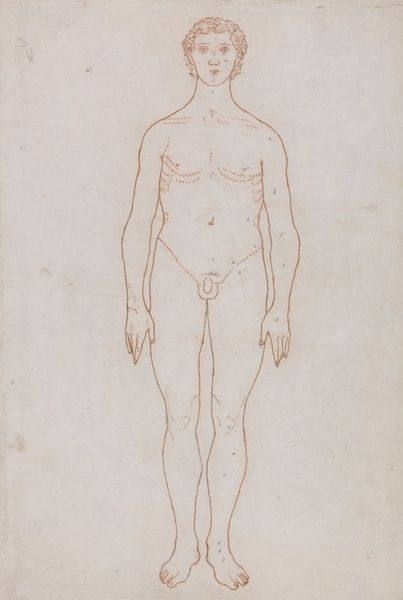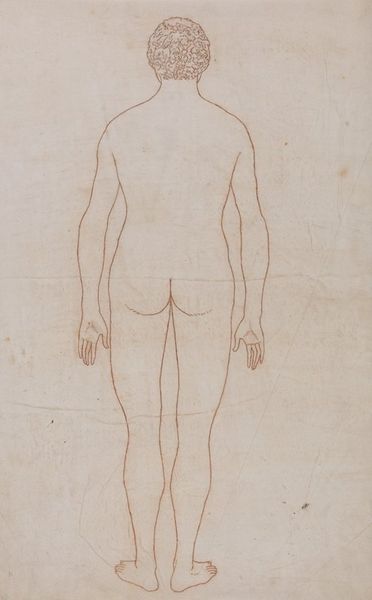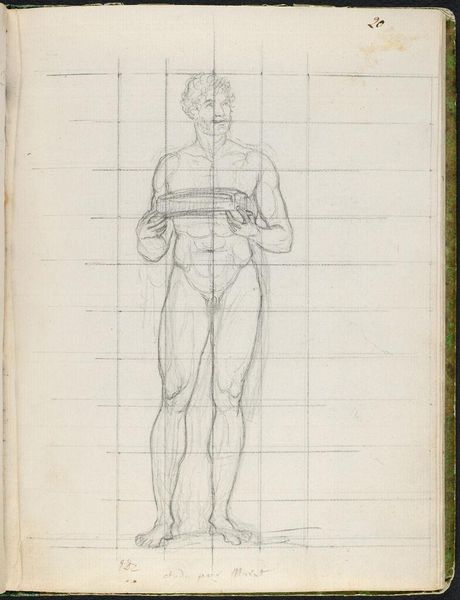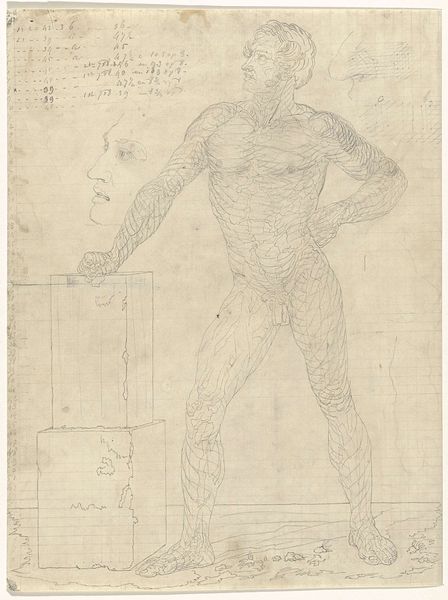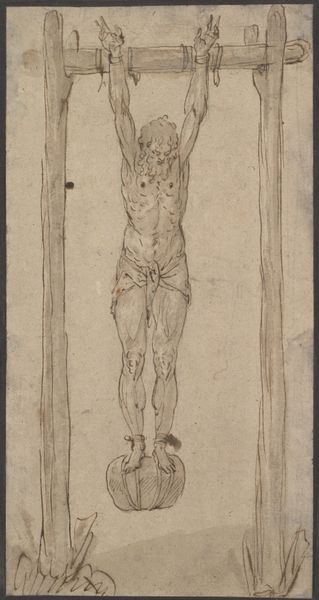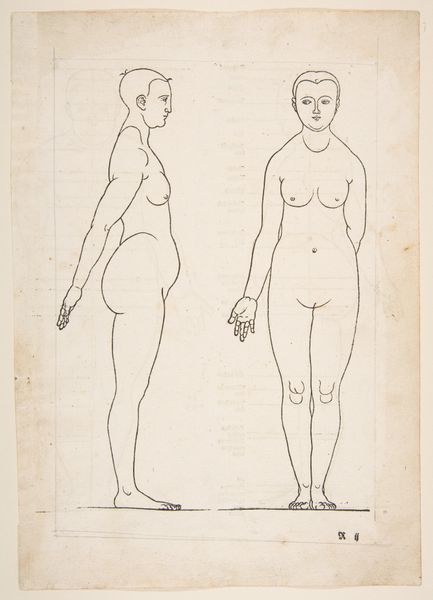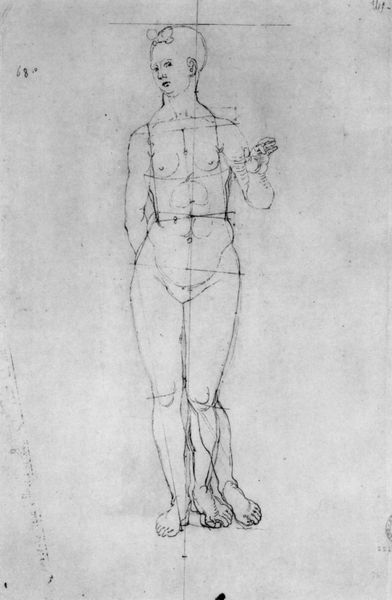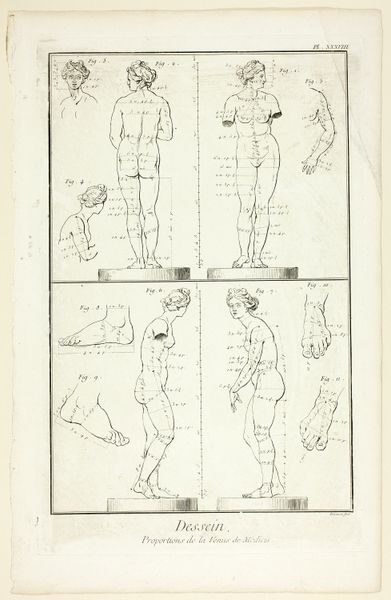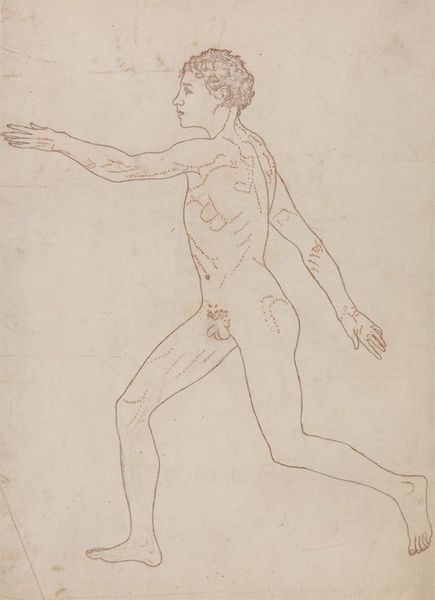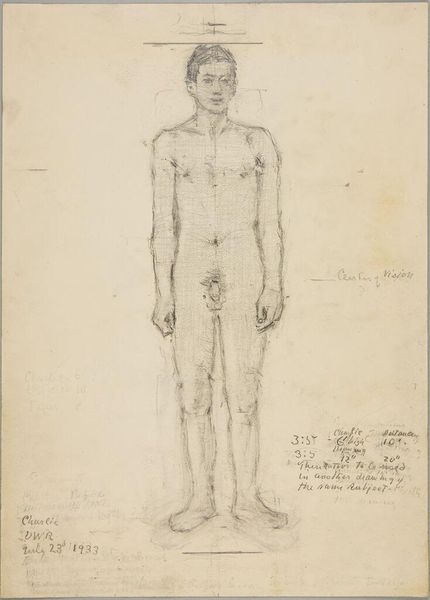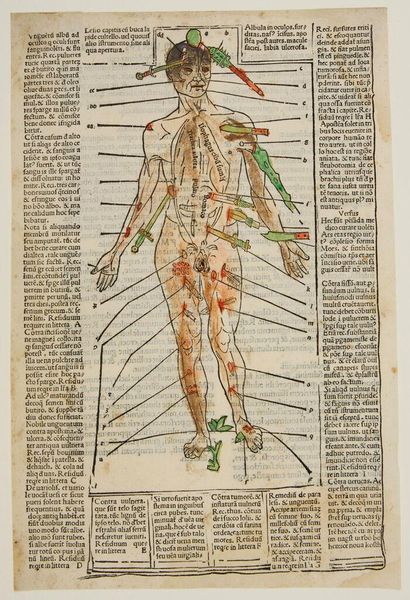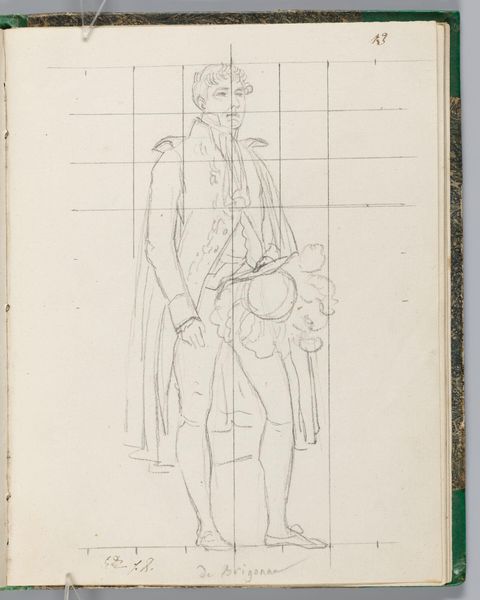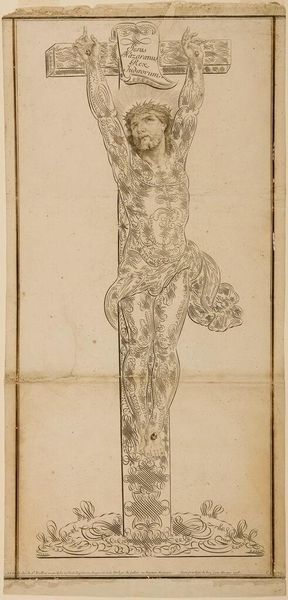
drawing, paper, ink
#
portrait
#
drawing
#
figuration
#
paper
#
11_renaissance
#
ink
#
line
#
history-painting
#
academic-art
Dimensions: height 157 mm, width 87 mm
Copyright: Rijks Museum: Open Domain
Sebald Beham made this pen drawing, entitled 'Proportiefiguur', in the mid-16th century. Beham was a German artist, working at a time when new ideas about humanism and classical learning were transforming European culture. The image presents a female nude overlaid with a grid. The grid is there to show ideal human proportions, based on classical principles rediscovered during the Renaissance. Artists used proportion studies like this one to represent the human body in a realistic but also idealized way. The figure is divided into segments, each carefully measured and related to the others, reflecting a belief in order and harmony. But these idealized forms were almost always white and reflected the racial biases of European society. So a drawing like this one can tell us a lot about the values and assumptions that shaped the art of the past. Art historians examine such drawings alongside other documents such as letters and treatises in order to understand the artistic theory of the time. Ultimately, this helps us understand the place of art within the broader social, political, and cultural context.
Comments
No comments
Be the first to comment and join the conversation on the ultimate creative platform.
